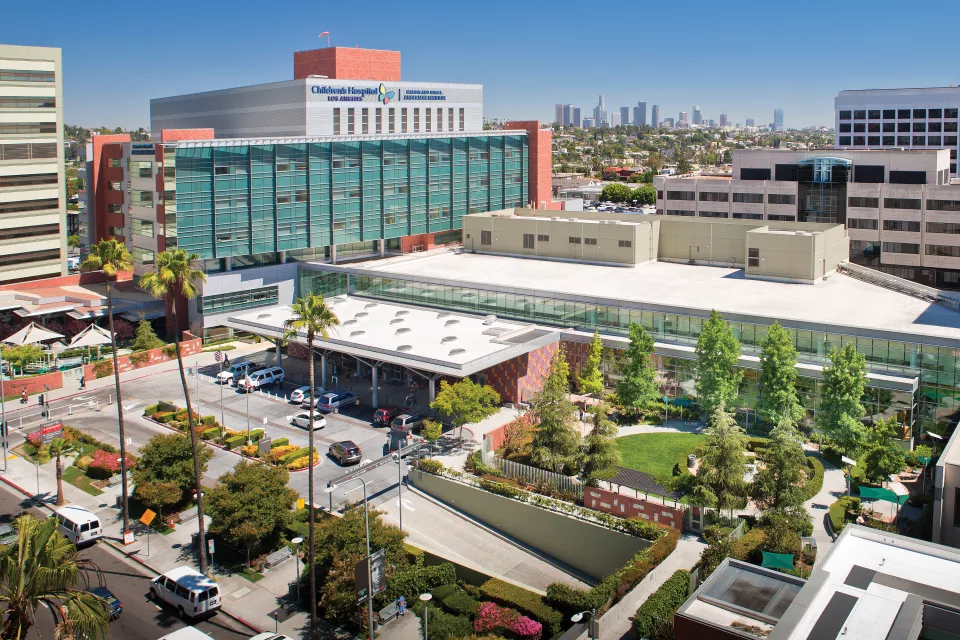Pulmonary hypertension (PH) is high blood pressure in the lung’s arteries. This increased pressure happens when the arteries in the lungs are too narrow or are not there. PH may be present at birth, or it may develop later.
When the arteries in the lungs are too narrow, the lungs don’t receive enough oxygen-rich blood from the heart. Oxygen is then unable to get to organs and tissues.
PH can affect newborns, babies and children, depending on the type and cause.
Types of Pulmonary Hypertension in Children
Three different types of PH can affect babies and children. The types describe the cause of PH.
Persistent pulmonary hypertension in the newborn
Persistent pulmonary hypertension in the newborn (PPHN) occurs in babies soon after birth. It usually affects babies born at full term or near full term.
PPHN happens because the baby’s lungs haven’t adjusted to life outside of the womb. Before babies are born, their lungs don’t need much blood. As a result, some blood vessels leading to the lungs are closed.
When the baby is born, the change in air pressure prompts these blood vessels to open. But in PPHN, the vessels don’t open like they should, leading to low oxygen levels.
Babies who have PPHN may have:
- Blue skin or lips
- Fast breathing
- Fast heart rate
- Low oxygen levels
Risk factors for PPHN include:
- Infection in the newborn
- Inhaling meconium (the baby’s poop) before or during birth
- Low oxygen levels in the baby before or during birth
Secondary pulmonary hypertension
Secondary PH means that a different health condition caused the PH. Conditions that lead to secondary PH include:
- Chronic lung disease
- Congenital diaphragmatic hernia (where abdominal organs bulge into the chest)
- Congenital heart defects (heart defects present at birth)
- Congenital lung defects (lung defects present at birth)
- Down syndrome
- Left-sided heart diseases including pulmonary vein obstruction, restrictive cardiomyopathy and mitral valve disorders
- Liver disease
- Lupus
- Sickle cell disease
Idiopathic pulmonary hypertension
PH without a known cause is called idiopathic PH. Children who have idiopathic PH don’t have any known health conditions that would cause PH. Idiopathic PH is the rarest type.
Pulmonary Hypertension Symptoms
Symptoms of PH tend to start gradually and get worse over time. If your child is showing signs of PH, seek immediate medical care. If your child has secondary or idiopathic PH, they may experience:
- Breathing harder and faster than normal
- Chest pain
- Dizziness or feeling lightheaded
- Fainting, especially during activity
- Feeling tired during and after activity
- Shortness of breath with activity
- Swelling in the ankles or legs
Pulmonary Hypertension Diagnosis
To diagnose PH, doctors use a physical exam and medical tests. Some of these tests include:
- Blood tests
- Chest X-ray
- Cardiac Catherization
- Echocardiogram, or echo (heart ultrasound)
- Electrocardiogram, or EKG (measures the heart’s electrical activity)
- Exercise (stress) test (measures how the heart and lungs respond to activity)
- Lung VQ scan (measures air flow and blood flow in the lungs)
- Magnetic resonance imaging, or MRI (provides detailed pictures of the heart, lungs and other organs)
- Pulse oximetry test (measures oxygen in the blood with a painless clip worn on the finger)
Pulmonary Hypertension Treatment
The first step in treating PH is to figure out the type and cause. For instance, a child who has congenital heart disease may need surgery or other treatments to correct the heart defect. A child who has sickle cell disease may require treatment to address sickle cell and PH.
There is no cure for idiopathic PH, but treatments can help slow the progression of all types of PH disease. Doctors often use medications to decrease the pressure in the lung’s arteries. These medicines can improve a child’s quality of life. Your child’s medicines may be:
- Oral medications (taken by mouth)
- Inhaled breathing treatments
- Intravenous (IV) medications
- Subcutaneous pump infusion, which delivers medicine under the skin
A newborn who has PPHN may need lifesaving treatment in a newborn and infant critical care unit (NICCU). In the NICCU, the baby may receive:
- Extracorporeal membrane oxygenation (ECMO), which uses an artificial lung to temporarily supply oxygen-rich blood to the baby
- Nitric oxide, which helps open the lung’s blood vessels
- Oxygen
- Ventilator support
Pulmonary Hypertension Program at Children’s Hospital Los Angeles
To learn more about our PH expertise and care, visit our Pediatric Pulmonary Hypertension Program.
